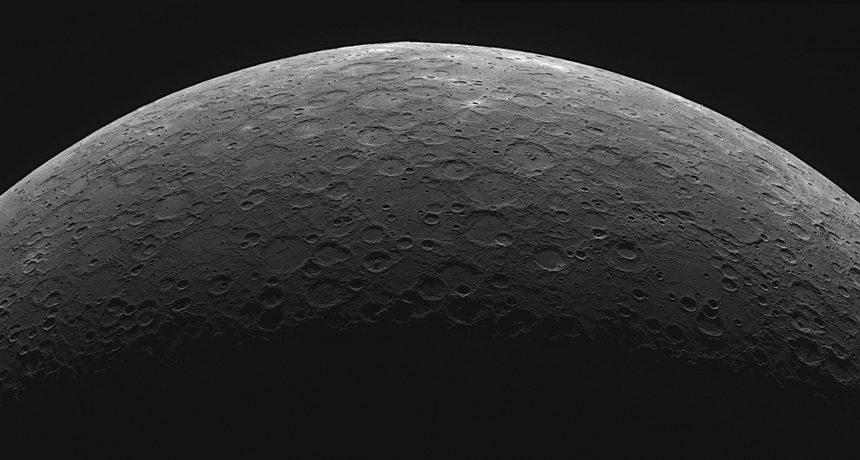Trust in gravity isn’t always the best astronomy policy

Some discoveries require complete faith in certain scientific theories. Others, like the explanation of Mercury’s perihelion, require new paradigms.
JPL/NASA
- More than 2 years ago
Astronomers obsessed with solving the mysteries of dark matter or dark energy should remember: To make a great discovery, sometimes you need to know what you’re looking for.
Take Michel Lalande. He was recording star positions at an observatory in Paris for a celestial catalog compiled by his grandfather’s nephew, Jérôme Lalande. On May 8, 1795, Michel noted a star’s position; two days later he recorded the star again, but this time the position wasn’t quite the same. He concluded that he messed up the first measurement and so only the second position was included in his uncle’s catalog.
Apparently neither Michel nor Jérôme had considered the possibility that the “star” had simply moved a tiny bit across the sky during the intervening 48 hours — which it had, because it wasn’t a star at all, but rather the planet Neptune.
At the time, of course, nobody knew that Neptune existed. Uranus, discovered by William Herschel in 1781, was the most distant known planet in the solar system. Actually, Uranus had also been spotted long before — in 1690, by the British Astronomer Royal John Flamsteed, who thought it was a star. He had a better excuse than the Lalandes, though, as nobody had ever before discovered a planet beyond the six known to the ancients. In fact, Flamsteed (and others) observed Uranus several times without realizing it before Herschel’s definitive discovery. (Herschel himself wasn’t so sure at first — he thought he had discovered a new comet.)
Uranus was soon well-established as planet. But it posed a problem: Its orbit didn’t match predictions based on Newtonian gravity. In 1821, when the French astronomer Alexis Bouvard published an analysis of Uranus’ orbit, he disregarded all sightings before Herschel’s discovery — they didn’t match the math. So maybe they were wrong. But in subsequent years new observations of the orbit didn’t fit Bouvard’s math, either. And other investigators identified numerous errors in his published data. Even when those errors were corrected, though, the discrepancy between the orbit of Uranus and Newtonian gravity persisted. By the 1840s, the “Uranus problem” was widely considered one of the outstanding astronomical questions of the era, in much the way that dark matter and dark energy perplex astronomers today.
Then as now, experts proposed multiple possible solutions to the mystery. Bouvard had pointed out, for instance, that the problem might not be with inaccurate measurements, but rather “some foreign and unperceived source of disturbance acting upon the planet.” Bouvard and some others believed that the “unperceived disturbance” might be a planet beyond Uranus. On the other hand, perhaps Newton’s law of gravity no longer applied at great distances from Earth, as the British astronomer George Biddell Airy believed.
Today, some physicists also believe deviations from standard gravity might explain the unusual rotation rates of galaxies that otherwise would imply the existence of dark matter. And perhaps a new theory of gravity would be a better explanation for the accelerated expansion of the universe that has inspired a belief in dark energy. But most experts contend that gravity as usual will triumph, as it did with Uranus in the 1840s.
In England, the gifted young mathematician John Couch Adams meticulously calculated where a more distant planet must be orbiting to exert gravitational effects responsible for the oddities in Uranus’ orbit. In France, a chemist-turned astronomer named Urbain Le Verrier, also skilled in math, did the same thing. Adams finished the task first, in the fall of 1845, but sent his results to Airy, who pretty much ignored them. Le Verrier communicated to the German astronomer Johann Galle, who immediately searched for, and found, the new planet, on September 23, 1846.
Other scientists recognized the discovery of Neptune as a spectacular vindication of Newton. As the German astronomer Johann Encke wrote to Le Verrier, “Your name will be forever linked with the most outstanding conceivable proof of the validity of universal gravitation.”
So the lesson seems to have been to preserve the theory of gravity and solve discrepant observations by proposing the existence of unseen matter. In the case of Uranus’ orbit, the unseen matter was a new planet. For the gravity-defying rotation rates of galaxies, the unseen (dark) matter is supposedly a bunch of invisible subatomic particles. Similarly, from the anomalous brightness of distant supernovas, astronomers prefer to deduce a novel entity in space, dark energy, rather than modify Einstein’s general theory of relativity to adjust the formulas for the universe’s expansion.
In the case of recalcitrant evidence, it is never clear whether scientists should go for the option of modifying the auxiliary assumptions (e.g., number of planets, as in the case of Neptune), or for the alternative option of revising the main theoretical hypotheses themselves (e.g., from Newtonian mechanics to general relativity, as in the case of the anomalous perihelion of Mercury).
— Ofer Lahav and Michela Massimi
In other words, trust gravity.
But before tweeting that, it would be wise to revisit another historical episode involving Le Verrier.
Even before the discovery of Neptune, Le Verrier had analyzed the orbit of Mercury, encountering great difficulty in making the math fit the facts. Mercury’s perihelion, its closest point to the sun, changed a bit from orbit to orbit by more than Newton’s law of gravity could accommodate, even when gravitational influence of all other planets was taken into account. After more precise calculations in the late 1850s, the discrepancy remained.
Some suggested that a new planet, between Mercury and the sun, was responsible. Le Verrier doubted that such a planet could have gone unnoticed. But when an amateur astronomer claimed to have seen a disk crossing the sun’s surface, Le Verrier decided that such a planet might exist after all, and that it could explain the anomaly in Mercury’s orbit. That seemed logical, so Le Verrier called the hypothetical planet Vulcan. He calculated where and when it ought to be visible. But of course it never showed up again. In this case, Newtonian gravity did turn out to be wrong. A new theory of gravity, Einstein’s general relativity, was needed to compute Mercury’s orbit accurately.
So the real lesson seems to be that it’s hard to tell whether a new entity or a new theory is needed to resolve a scientific paradox, as Ofer Lahav and Michela Massimi point out in a new paper. It’s an issue that faces physicists who study the universe today, say Lahav, of University College London, and Massimi, of the University of Edinburgh.
“One may wonder whether the current state of the art in cosmology … resembles the discovery of Neptune, or whether the recalcitrant evidence coming from supernova 1a may not be better explained by a modification of the accepted paradigm (like in the case of the perihelion of Mercury, which ushered in general relativity),” they write.
Physics history tells many tales in which a previously unknown entity was properly invoked to preserve a prevailing theory. In the 1920s, for instance, radioactive beta decay perplexed many physicists because it seemed not to obey the law of conservation of energy. Some experts suggested that maybe energy wasn’t conserved after all, or was conserved only statistically and could be violated for some individual events. But the correct resolution turned out to be the existence of neutrinos, crazy near-massless particles that had been secretly siphoning off the missing energy.
But, as with Mercury’s orbit, there have also been rare occasions when a beautiful (and well-supported) theory was slain by an ugly fact. So the real lesson is that history is should not be consulted selectively. There are different ways to solve scientific puzzles.
“Scientific theories consist of both main theoretical hypotheses and auxiliary assumptions,” Lahav and Massimi point out. “In the case of recalcitrant evidence, it is never clear whether scientists should go for the option of modifying the auxiliary assumptions (e.g., number of planets, as in the case of Neptune), or for the alternative option of revising the main theoretical hypotheses themselves (e.g., from Newtonian mechanics to general relativity, as in the case of the anomalous perihelion of Mercury).”
It was the eminent French philosopher Pierre Duhem who first articulated this aspect of science, Lahav and Massimi note. When scientists face a dilemma of this kind, they write, Duhem suggested that they follow their “good sense.” The right answer will be found eventually.
“As always, nature will ultimately answer the question as to whether the current dark energy program is on the right track, as Adams and Le Verrier were in postulating Neptune to account for the anomaly in Uranus,” Lahav and Massimi write. “In our hands are the experimental and technological tools to search for such an answer.”
Follow me on Twitter: @tom_siegfried







